 Chester Arthur never ran for president, but he got the job anyway. And the first time he walked into the White House as its new resident, he didn’t like what he saw.
Chester Arthur never ran for president, but he got the job anyway. And the first time he walked into the White House as its new resident, he didn’t like what he saw.
But I’m getting ahead of myself.
To fully understand what Arthur did to the place, you must first understand why.
To say the White House was rundown by the early 1880s is an understatement. Let’s be blunt: it looked like a shabby hotel on a courthouse square in a little county seat town.
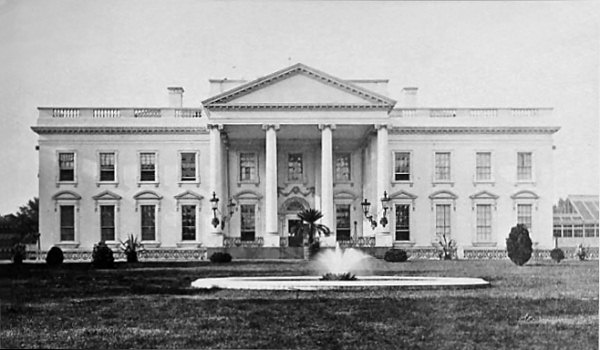 For decades, one president after another did the minimum they could get away with to keep the place from becoming threadbare. It wasn’t that they were cheap; there just wasn’t much money for the finer things. Congress gave the president one lump sum each year. Everything – his personal salary, maintenance and upkeep for the executive mansion, food, liquor and wines for official entertaining, salaries for the maids and butlers – everything came out of that single pot.
For decades, one president after another did the minimum they could get away with to keep the place from becoming threadbare. It wasn’t that they were cheap; there just wasn’t much money for the finer things. Congress gave the president one lump sum each year. Everything – his personal salary, maintenance and upkeep for the executive mansion, food, liquor and wines for official entertaining, salaries for the maids and butlers – everything came out of that single pot.
They did a good job keeping the exterior walls freshly painted a glistening white, and the grounds were (more or less) neat and tidy.
But the minute you set foot inside the front door, your opinion plummeted from “splendor” to almost “squalor.”
Administration after administration tried to make the fading drapes last a little longer; tried to get another year’s use out of the fraying carpet; tried to put off a new coat of paint for the public state rooms. And the furniture looked like hand-me-downs from none too prosperous relatives.
 All that changed when an assassin pulled the trigger of a pistol, sending James Garfield to the Great Hereafter and sending Chester Arthur to 1600 Pennsylvania Avenue.
All that changed when an assassin pulled the trigger of a pistol, sending James Garfield to the Great Hereafter and sending Chester Arthur to 1600 Pennsylvania Avenue.
And as I wrote earlier, Arthur didn’t like what he saw when he got there.
Chester Alan Arthur actively pursued the Good Life. He was a New York City attorney who earned big bucks, which he spent lavishly on his fine clothes, his home, his entertaining. He was a GQ Dude who had to have the latest style of everything. It was said he owned 80 pairs of pants alone! And he certainly was a trendsetter with those side whiskers, the biggest facial hair sported by any president.
So how could this Gilded Age Dandy expect to live in an 80+ year-old mansion whose best days were six decades behind it?
He couldn’t. In fact, wasn’t even willing to try. Arthur refused to move into the place until big changes were made.
Elegant Arthur (as his opponent snidely called him) waited until the Widow Garfield moved out. Her carriage was barely gone when he launched into his extreme White House makeover. And he knew just who to turn to, to give the place some class.
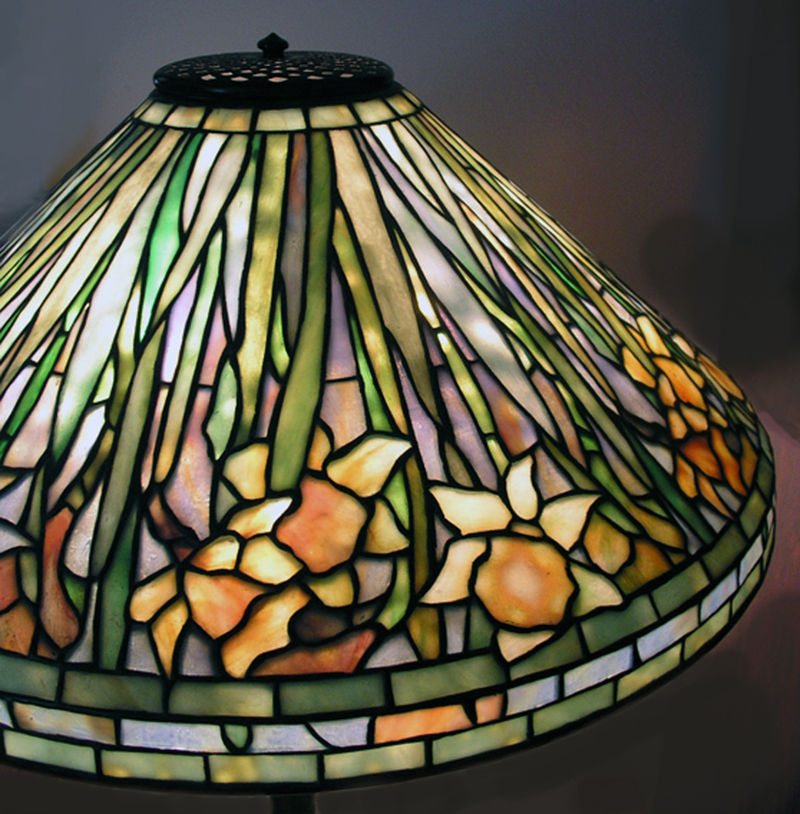 Louis Comfort Tiffany was The Name in interior décor in those days. He filled the opulent mansions of the Gilded Age’s Robber Barons with glittering grace: stained glass windows, glass mosaics, blown glass, ceramics, jewelry, enamels and metalwork. Remember the famous Tiffany Lamps? He was the guy who made them. He turned Mark Twain’s Hartford, Connecticut home into a showplace. Now Arthur told him to do the same to the White House.
Louis Comfort Tiffany was The Name in interior décor in those days. He filled the opulent mansions of the Gilded Age’s Robber Barons with glittering grace: stained glass windows, glass mosaics, blown glass, ceramics, jewelry, enamels and metalwork. Remember the famous Tiffany Lamps? He was the guy who made them. He turned Mark Twain’s Hartford, Connecticut home into a showplace. Now Arthur told him to do the same to the White House.
And Tiffany let his imagination run wild.
He charged into redoing the entire first floor. The East Room, the Red Room, the Blue Room, the State Dining Room all got the Tiffany touch.
 Walls were tinted a pale olive. Gold leaf squares were added everywhere. Even the ceiling wasn’t spared, where gold and silver traceries were woven to spell “USA.”
Walls were tinted a pale olive. Gold leaf squares were added everywhere. Even the ceiling wasn’t spared, where gold and silver traceries were woven to spell “USA.”
But the true pièce de résistance was the main entrance, where a fifty-foot opalescent Tiffany glass screen, supported by imitation marble columns, separated the north vestibule from the east-west corridor. Here’s an artist’s rendering of how it looked when lit.
The final product took people’s breath away. It was part Mississippi River steamboat, part New Orleans brothel, part Arab sheik’s harem all rolled into one.
And what did Arthur do with the old White House furnishings? He had 24 wagon loads hauled off and sold at auction, with some pieces dating back to when John Adams first moved in back in 1800!
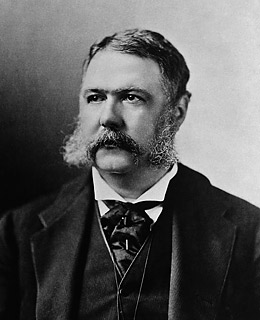 Elegant Arthur was deliriously happy with the results. Finally, the White House looked like a residence worthy of the President of the United States.
Elegant Arthur was deliriously happy with the results. Finally, the White House looked like a residence worthy of the President of the United States.
The American people were pleased, too. At long last, the Executive Mansion was decorated in the current fashion.
But that turned out to be a problem, because what is popular today becomes passé tomorrow. As the 19th Century drew to a close, the Tiffany Look, including the signature stained glass screen in the main hallway, seemed dated.
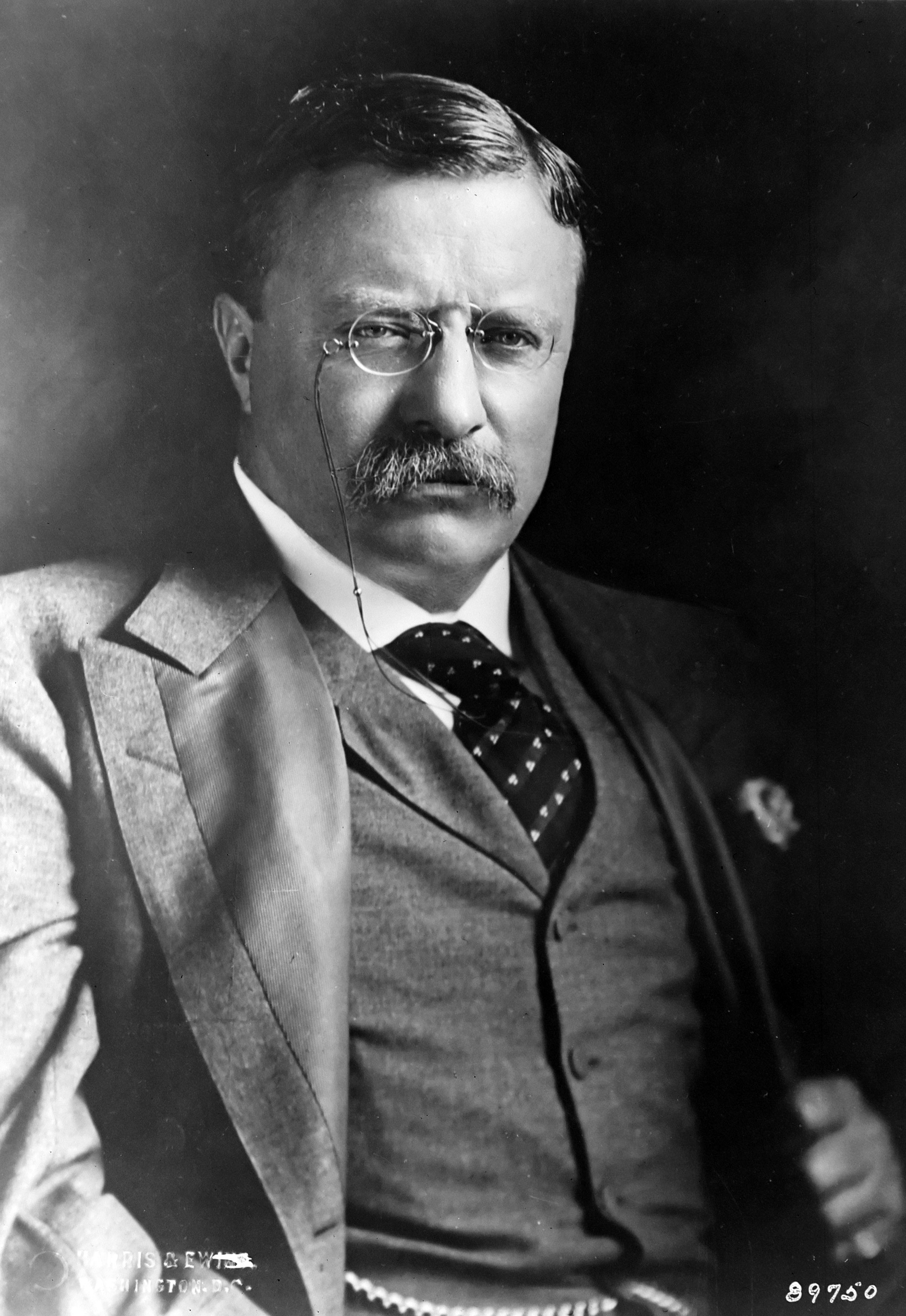 Believe it or not, yet another assassin set in motion the next White House makeover. A bullet ended William McKinley’s presidency and began Theodore Roosevelt’s. Teddy had a large, young family and needed all the extra space he could get. So in 1902 he had the East and West Wings added, turning office space on the second floor into additional bedrooms for his boisterous brood. And since the construction crew was already at work, he had them remove all of Tiffany’s touches. The screen came down, the gaudiness was gone, and Teddy restored the mansion’s original neoclassical style, the look we know today.
Believe it or not, yet another assassin set in motion the next White House makeover. A bullet ended William McKinley’s presidency and began Theodore Roosevelt’s. Teddy had a large, young family and needed all the extra space he could get. So in 1902 he had the East and West Wings added, turning office space on the second floor into additional bedrooms for his boisterous brood. And since the construction crew was already at work, he had them remove all of Tiffany’s touches. The screen came down, the gaudiness was gone, and Teddy restored the mansion’s original neoclassical style, the look we know today.
But from 1882 to 1902, the White House literally glittered. When looking over the mansion’s entire 215 year history, one is tempted to describe that period by paraphrasing Camelot’s famous conclusion:
That once there was a spot;
For one brief shining moment,
That was known as Tiffany!
Did you find this enjoyable or helpful? Please continue to join me each week, and I invite you to read Tell it Like Tupper and share your review!
Curious about Tell It Like Tupper? Here’s a chance to see for yourself. Take a sneak peek at a couple chapters in this free downloadable excerpt.

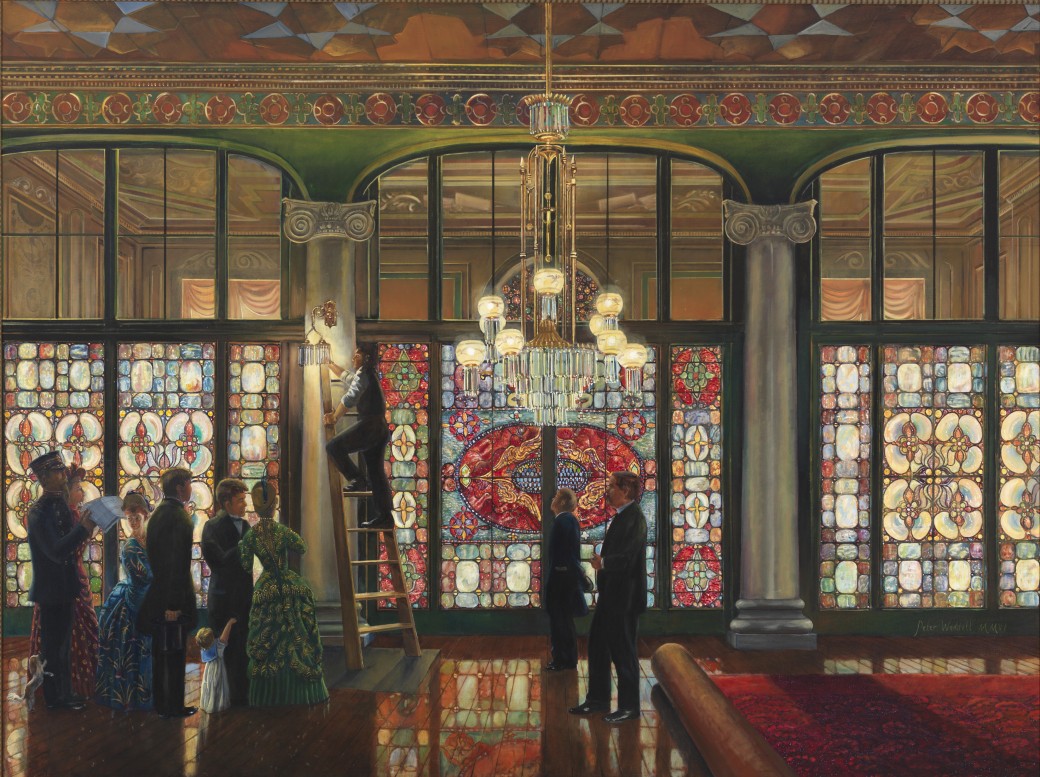
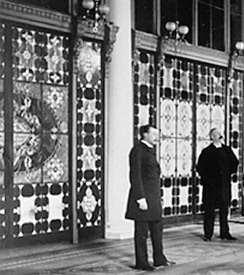
Pingback: LEVI’S UNLUCKY CHOICE - J. Mark Powell
Alice Roosevelt brilliantly described the decor of the White House at the time she moved in as ‘late Grant and early Pullman.”
She certainly had a way with words, didn’t she?
I have read that Teddy had a Tiffany screen taken out and smashed. Is it this one? For a lot of people, taste is in their mouth. So much for bully Teddy.
So what became of all of the Tiffany detail? Was it destroyed or also sold off?